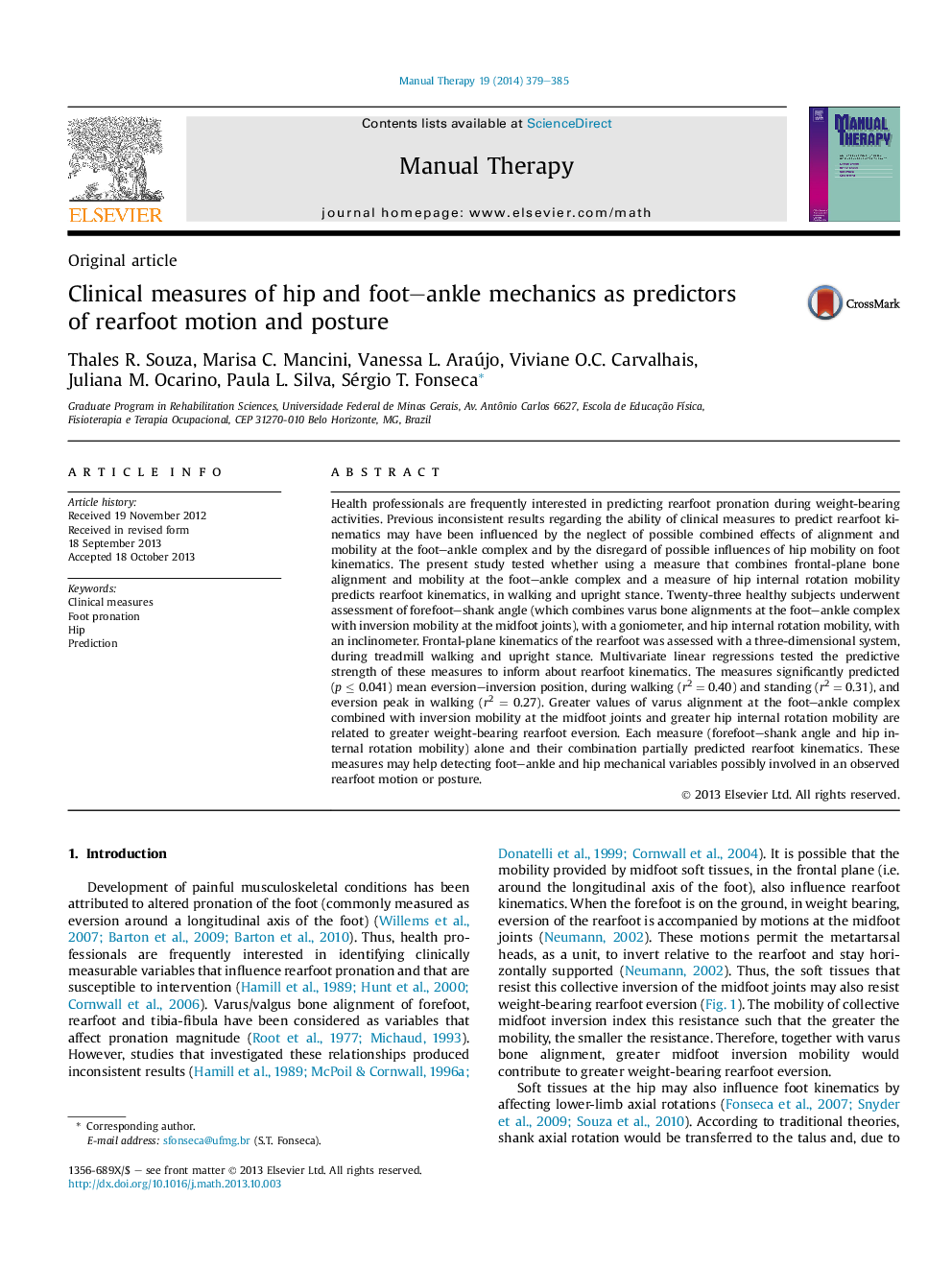| کد مقاله | کد نشریه | سال انتشار | مقاله انگلیسی | نسخه تمام متن |
|---|---|---|---|---|
| 5864723 | 1135929 | 2014 | 7 صفحه PDF | دانلود رایگان |
Health professionals are frequently interested in predicting rearfoot pronation during weight-bearing activities. Previous inconsistent results regarding the ability of clinical measures to predict rearfoot kinematics may have been influenced by the neglect of possible combined effects of alignment and mobility at the foot-ankle complex and by the disregard of possible influences of hip mobility on foot kinematics. The present study tested whether using a measure that combines frontal-plane bone alignment and mobility at the foot-ankle complex and a measure of hip internal rotation mobility predicts rearfoot kinematics, in walking and upright stance. Twenty-three healthy subjects underwent assessment of forefoot-shank angle (which combines varus bone alignments at the foot-ankle complex with inversion mobility at the midfoot joints), with a goniometer, and hip internal rotation mobility, with an inclinometer. Frontal-plane kinematics of the rearfoot was assessed with a three-dimensional system, during treadmill walking and upright stance. Multivariate linear regressions tested the predictive strength of these measures to inform about rearfoot kinematics. The measures significantly predicted (p â¤Â 0.041) mean eversion-inversion position, during walking (r2 = 0.40) and standing (r2 = 0.31), and eversion peak in walking (r2 = 0.27). Greater values of varus alignment at the foot-ankle complex combined with inversion mobility at the midfoot joints and greater hip internal rotation mobility are related to greater weight-bearing rearfoot eversion. Each measure (forefoot-shank angle and hip internal rotation mobility) alone and their combination partially predicted rearfoot kinematics. These measures may help detecting foot-ankle and hip mechanical variables possibly involved in an observed rearfoot motion or posture.
Journal: Manual Therapy - Volume 19, Issue 5, October 2014, Pages 379-385
